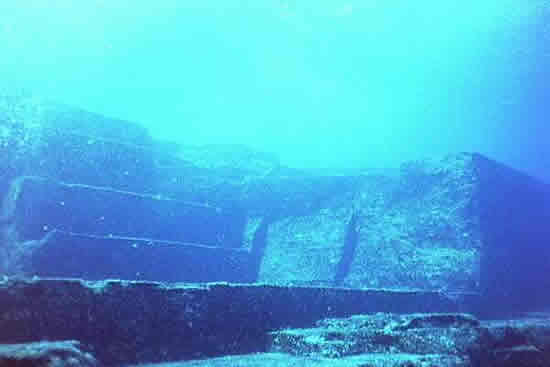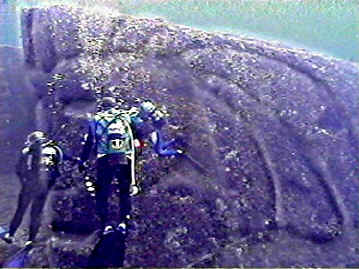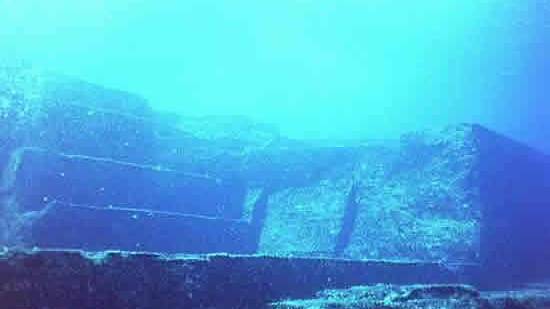The Forgotten Underworld of Japan - Mysterious Underwater Ruins
Source: realitysandwich.com

Graham Hancock explains his initial interest in prehistoric underwater archaeology in chapter 28 of Underworld, entitled “Maps of Japan and Taiwan 13,000 Years Ago?” In the opening paragraph he writes: “It was the submerged structures of Japan that first awakened me to the possibility that an underworld in history, unrecognized by archaeologists, could lie concealed and forgotten beneath the sea” (Hancock 2002). Since the book’s release, Hancock has become the world’s most outspoken proponent of investigating sunken ruins in an effort to learn more about possible lost civilizations.
Many anomalous structures scattered around the world bear the signature of human design. In addition to the few we have discussed, other notable ones are the sunken city beneath the Gulf of Cambay off the southwest coast of India, the ruins found off Cuba, and finally, and most important, the underwater pyramids of Yonaguni, Japan. All of these structures, except those found off of Cuba, are known to have been above water within the past thirteen thousand years, during the last ice age.
In the earliest times, the prehistoric inhabitants of Japan, the Jomon, developed a sophisticated material culture. The Jomon were not of typical East Asian descent; they were proto-Caucasoids, fair-skinned with prominent noses and full, light-colored beards. Many other similarities link them to other primitive people in the Americas and ancient Northern Europe. Although their society was primitive by the standards of later times, they were the first culture on Earth to develop pottery, according to mainstream theorists. Examples of this technology date back to 16,000 BCE. This was a time when many of the submerged structures of Yonaguni would have been above water, and if they were in fact built by human hands, this would have been the time that their construction was underway. Some of the figurines from later in the Jomon period depict what appear to be humanoid creatures with space suits, including helmets, or even, in some cases, underwater breathing apparatuses.
Erich von Däniken noted this in a number of his books, including his most famous, Chariots of the Gods? His intent was to point directly to ancient aliens, but I’d rather think that in the distant past humans were more inventive than they are now, and that there were civilizations deep in antiquity, perhaps of terrestrial origin, whose technology and cultural sophistication far surpassed our own. The Jomon even possessed, though cruder in construction, megalithic technology; several stone circles built by them are known to exist.
Without a doubt, Japanese culture is graced with a rich mythological heritage. In 712 CE this wealth of myth and legend culminated in the first written chronicle of Japan, known as the Kojiki. Many stories in this manuscript told of horrendous earthquakes and conflagrations. There were entire ages when the world was ruled by the gods. During this mythical age of gods and empires, the Jomon were the dominant race of the Japanese islands.
[...]
Read the full article at: realitysandwich.com

Yonaguni Jima is an island that lies near the southern tip of Japan’s Ryukyu archipelago, about 75 miles (120 kilometers) off the eastern coast of Taiwan.
A local diver first noticed the Yonaguni formations in 1986, after which a promontory on the island was unofficially renamed Iseki Hanto, or Ruins Point
The district of Yonaguni officially owns the formations, and tourists and researchers can freely dive at the site.
Some experts believe that the structures could be all that’s left of Mu, a fabled Pacific civilization rumored to have vanished beneath the waves.
On hearing about the find, Kimura said, his initial impression was that the formations could be natural. But he changed his mind after his first dive...
Source






















